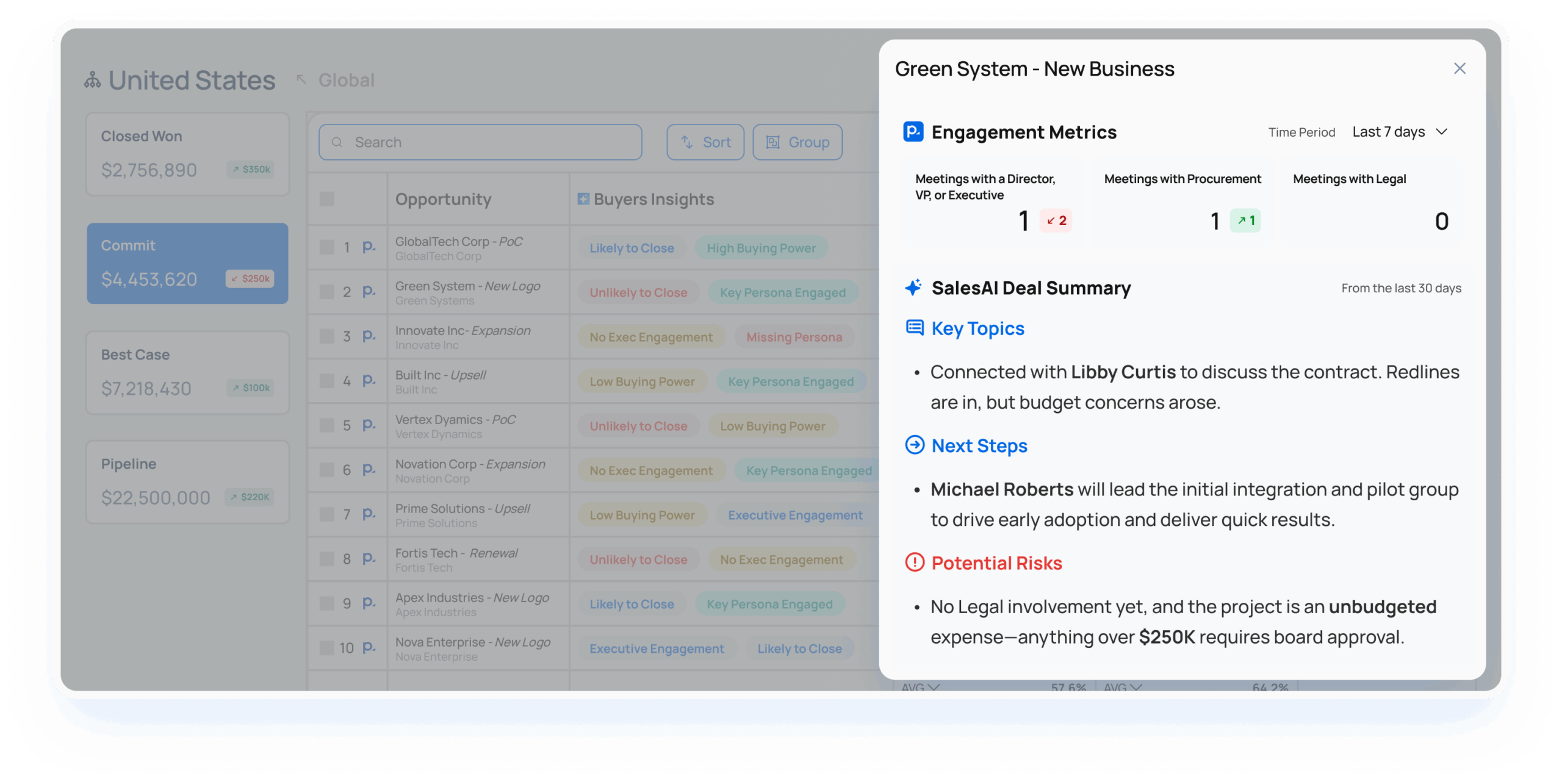
People.ai today made a forecasting tool generally available that leverages artificial intelligence (AI) to more reliably predict when specific customer engagements will result in an actual deal being sealed.
Designed to integrate with the Salesforce software-as-a-service (SaaS) platform, the forecasting tool applies sentiment analysis to historical customer relationship management (CRM) data, email, calendars and recordings of meetings to also determine the level of engagement and what hurdles remain to be overcome before a deal might actually close.
Additionally, the forecasting tool will also evaluate risks to the deal, apply a confidence score to it being closed, and suggest next steps to help ensure a deal closes by a certain date.
That capability, in addition to making it possible to more accurately predict revenue flow, also enables sales teams to spend more time selling versus entering mostly inaccurate estimates of when they think a specific proposal might be closed into a CRM application, says John Ambrose, senior vice president for strategy and marketing at People.ai.
Most salespeople generally underestimate the hurdles that need to be overcome before a sales proposal can become a closed deal. Other salespeople, meanwhile, will deliberately downplay the value of a potential deal until they are absolutely certain it will close. In both scenarios, the amount of bias in those sales reports makes it difficult for sales and finance leaders to make revenue predictions.
People.ai is addressing that issue by eliminating the need to rely on salespeople to make those forecasts of dubious accuracy in the first place, notes Ambrose. That approach doesn’t eliminate the need for sales teams so much as it allows them to spend more time actually selling, he adds. “We need to put an end to the theater of forecasting,” says Ambrose.
The overall goal, however, is to provide the leadership of organizations with a more accurate forecasting tool that is integrated into a platform for managing the sales pipeline.
There is, of course, no absolute correlation between reduced revenues and the amount of time salespeople spend entering data, but, in theory, freeing them up from those tasks should enable them to spend more time engaging customers. Less clear is how much of that time will be spent engaging existing customers versus focusing on expanding the overall customer base, but each organization will need to decide for itself how many engagements, also known as touches, its sales team will be expected to have in the age of AI.
Longer term, of course, it’s only a matter of time before organizations looking to acquire products and services have their own agents. In fact, it’s only a matter of time before agents acting on behalf of buyers and sellers will need to have some way of negotiating with each other. In the meantime, however, there is plenty of opportunity to employ AI agents to reduce the amount of toil on both ends of any transaction.


